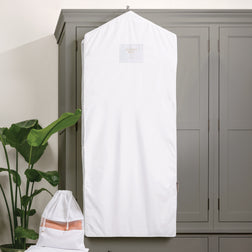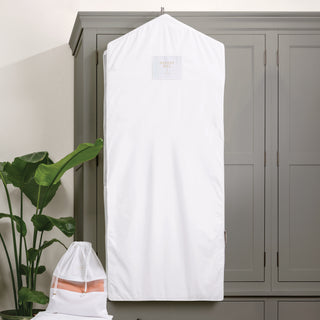Silk has long been a status symbol synonymous with elegance, taste and style, but this valuable fabric can be ruined in an instant when it’s washed or stored incorrectly.
Silk dates back hundreds of millennia to its origins in China. Thousands of years have passed since then, and today silk is widely used in everything from clothing to bedding to parachutes to sutures.
Silk has long been a status symbol synonymous with elegance, taste and style, but this valuable fabric can be ruined in an instant when it’s washed or stored incorrectly.
That’s why we created this comprehensive guide to protecting and cleaning silk clothes, covering the following topics:
- Identifying Pure Silk and Silk Blends
- When to Dry Clean Silk Garments
- Washing Silk Clothes at Home
- Getting Rid of Stubborn Silk Stains
- Protecting Silk Against Damage
- Proper Storage Techniques for Silk Clothes
Knowing what it takes to care for your silk clothing properly will extend the life of your favourite pieces and keep them looking pristine all year round.
Identifying Pure Silk and Silk Blends
Naturally strong and unbelievably soft, it’s amazing that silk in its purest form is extracted from the cocoons of the mulberry silkworm. The process that takes the raw cocoon and turns silk thread into a panel of delicately woven fabric involves a number of steps that must be performed with expertise and precision to produce the right result.
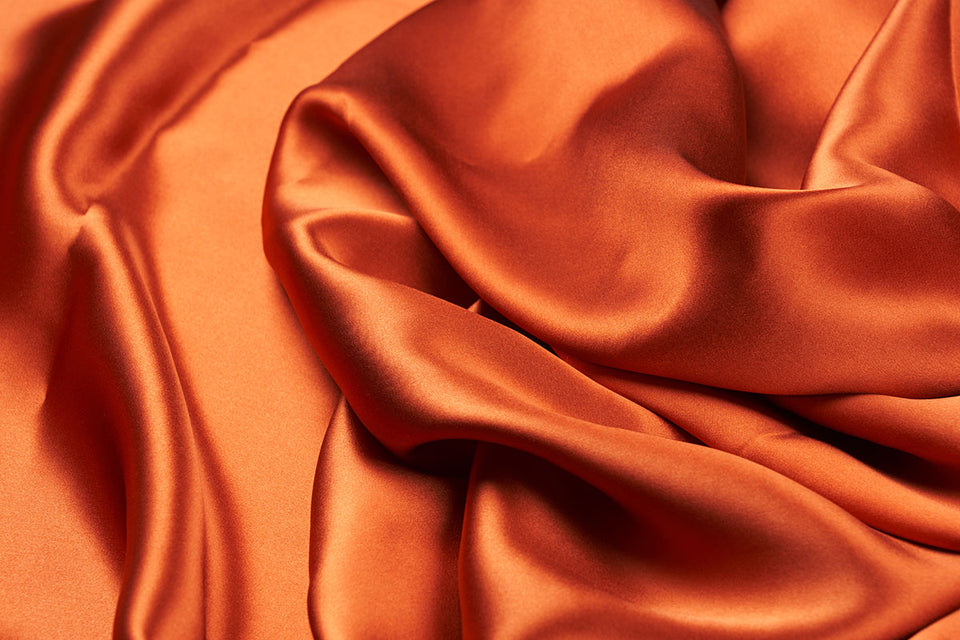
Considering how tedious the production of silk is, it’s no wonder that clothing made with silk needs to be treated with extraordinary care in order to preserve the integrity of the natural fibre and its distinctive sheen.
How you clean and care for your silk garments is influenced by several factors, but most important is whether your item is purely or partially made of silk strands.
It’s not always obvious whether a piece of clothing is real silk or a counterfeit, but knowing one or two tricks of the trade can help ensure you’re purchasing authentic pieces at the right price.
- Look for a shimmer. Real silk reflects light in a unique way given the molecular structure of its strands, which means it will shimmer and shift color as light moves across it. Fake silk will reflect only white in the light.
- Rub it between your fingers. Pure silk is a natural fibre and will react differently when rubbed between your fingers than a synthetic fabric would. You should feel it become warm after a little rubbing.
- Listen for a textural crunch. When bunched together, real silk creates a distinct sound that some describe as similar to stepping on fresh snow.
Commercial textile standards allow for some wiggle room when it comes to claiming something is pure silk or a silk blend. Pure silk does not mean 100% silk in every case since the fabric need only be 95% or greater to be designated pure silk. Any fabric with silk content between 20-50% can be called a silk blend or blended silk. However, these standards are not always accurately monitored, so purchase silk garments from trusted sources that are known to produce quality pieces.
When to Dry Clean Silk Garments
Wondering if it is a good idea to dry clean your silk clothes?
The label on your clothing is always the best place to start when you’re trying to figure out the most effective and safe way to clean silk pieces. If your garment lacks a label or care instructions, ask your local dry cleaner to assess the piece and advise you on the best course of action for care.
In most cases, silk garments are best cleaned by dry cleaning professionals in order to maintain their beauty and longevity. On rare occasions, some types of silk clothing are pre-treated during manufacturing and will not respond well to dry cleaning.
Contrary to what the name suggests, dry cleaning does submerge your clothes in a liquid bath - but instead of water, a chemical solvent is used to clean and remove stains. The type of solvent used is chosen according to what the fabric is and what type of staining may be present.
Dry cleaners have access to special solvents that can target stains with different products according to the nature of the stain. Their steaming equipment is also more robust than at-home clothing steamers and often safer to use to get that wrinkle-free result you want.
Dry cleaning is often considered the best method for cleaning silk even if your item can withstand hand-washing at home.
Washing Silk Clothes Clean at Home
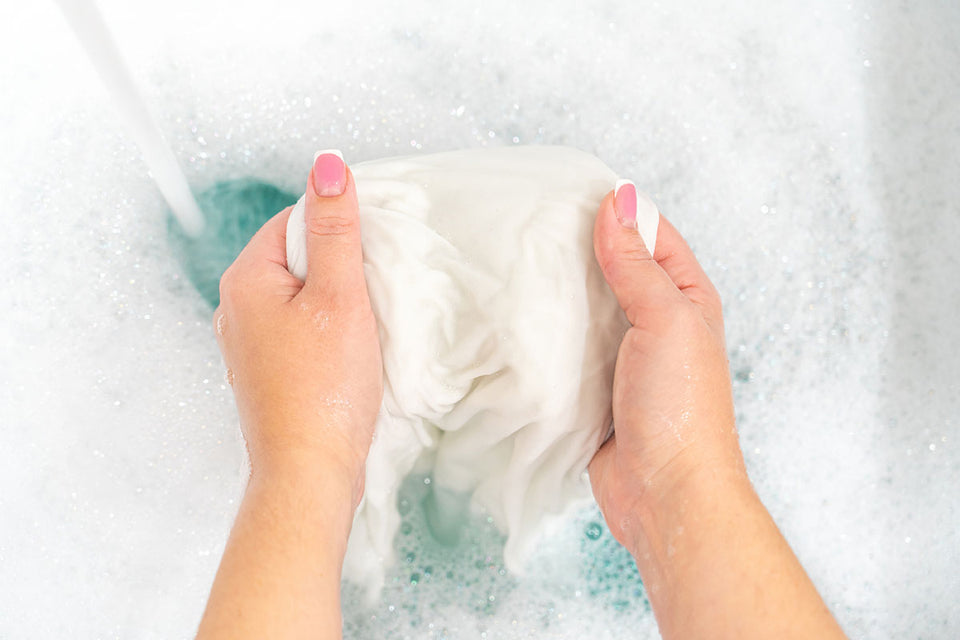
If your silk garment’s label expressly prohibits the use of dry cleaning solvents, it’s helpful to know a few tips for washing silk at home that will keep it looking as gorgeous as the day you bought it.
Though silk is one of the strongest natural fibres, it is important to take special care when washing it, because it is quite vulnerable when wet. Up to 20% of its natural strength is lost when it’s saturated, and because it has poor elasticity, it can become misshapen easily when stretched.
Hand-Washing Silk
When hand-washing your silk pieces at home, keep these recommendations in mind:
- Use detergents and stain removers that are clearly labelled as safe for silk fabric.
- Wash silk garments separately from one another and other delicates to prevent colour bleeding.
- Turn clothing inside out prior to washing.
- Submerge in a clean tub or sink filled with cool water and enough mild, silk-safe detergent to cleanse the material.
- Agitate the water by stirring gently; do not attempt to scrub or stretch silk fabric as it can lose its shape permanently.
- Allow the material to soak for up to 30 minutes so that the fabric has enough time to release dirt and oily substances.
- Rinse by gently running cool water through the material until the water runs clean and clear of suds.
- Do not twist or wring the fabric to release excess water; squeeze the fabric together or against the edge of the sink carefully to press water out.
- Lay flat to dry; avoid hanging or draping wet silk in order to help it keep its shape.
Machine-Washing Silk

If your garment’s label allows for machine-washing, it will likely instruct you to follow tips similar to these for the best results:
- As with the hand-washing method, turn the garment inside out prior to washing.
- Avoid snagging your silk fabric by using a mesh laundry bag meant for delicate clothing.
- Choose the gentlest wash cycle, often named Delicates or Hand Wash, and select a cold water temperature.
- A slow spin cycle is safest for silk fabric since faster spin cycles can cause inadvertent stretching.
Once dry, silk fabric can be steamed in order to remove wrinkles. Be careful not to stretch the garment too much while steaming since this can damage the fibres and alter the fit of the clothing permanently. Instead, hang the garment upright and move the steam wand in downward strokes to relax the fabric and straighten any wrinkles.
Getting Rid of Stubborn Silk Stains
If your silk garment has a stain, it should be removed prior to washing the fabric to avoid setting the stain. The process of removing stains can be tricky depending on the substance that caused the stain. If you take your garment to a dry cleaner, they may ask about the source of the stain, since the type of stain will determine which solvent they use to remove it.
Most stain removers made for in-home use on silk garments may be all-purpose, but make sure to read the labels on the bottle to check for warnings or notes about how to mix the product for the best results. Once the solution is applied, you may need to rub the fabric gently to work the solution into the stain, but avoid scrubbing it vigorously or scratching at the surface.
Spotting stains on silk fabric can be tricky; you may not realise there is a stain until after the piece has been cleaned since the natural fibres can absorb substances like sweat and body oils. These stains may not appear until they’ve been exposed to solvents or heat from steaming.
Even if your silk garment’s label advises against dry cleaning, it may be worthwhile to visit the dry cleaner for stain removal services in particular. The solvents they use for stain removal may still be safe even for garments that cannot be submerged in professional cleaning solutions. This can be a lifesaver for your garment if a stain proves too stubborn for at-home solutions.

Protecting Silk Against Damage
Silk clothing can be damaged in a number of ways, but one of the most common causes of damage is mishandling it while cleaning.
Bleach-Based Cleaners
Because of its vulnerability to strong chemicals, bleach should never be used on silk fabric. This includes detergents that use colour-safe bleach or bleaches that are oxygen-based.
Drying Tips
Tumble drying silk, even on low or no-heat settings, can also cause the fibers of the fabric to break or stretch out of shape. If you want to speed up a silk garment’s natural drying process, you can lay it out flat on a cotton towel and place another cotton towel on top of it. Then, gently roll it up so that the slight pressure between the layers can absorb moisture from the silk fabric.
Solutions for Dull Fabric
If you find that the sheen of your silk clothing has lost its shine, appears to have a white film, or looks dull, the silk fibres may have become damaged due to improper cleaning or exposure to too much light or heat. A solution of 1/4 cup white distilled vinegar to 1 gallon of water can help restore the fabric’s natural shine. Follow the steps you would with hand-washing; submerge the garment but do not scrub or stretch it, and be sure to rinse it thoroughly and dry the garment flat.
Steaming vs. Pressing
While steaming is the safest way to remove wrinkles in silk clothing, it is possible to use an iron on a low heat setting for items whose labels indicate pressing is a safe practice. Even then, you may want to consider using a specialty pressing cloth that acts as a barrier between your garment and the iron’s plate. Be sure to turn the garment inside out before ironing.
Exposure Issues
Overexposure to sunlight and heat can also cause damage to the texture and colour of a silk garment, so avoid placing it near heat sources or windows that let in a lot of daylight. Use opaque garment bags if you need to hang your clothing in the car and try to remove the silk garments as soon as possible to minimise the time they spend inside of the car on a hot day.
Proper Storage Techniques for Silk Clothes
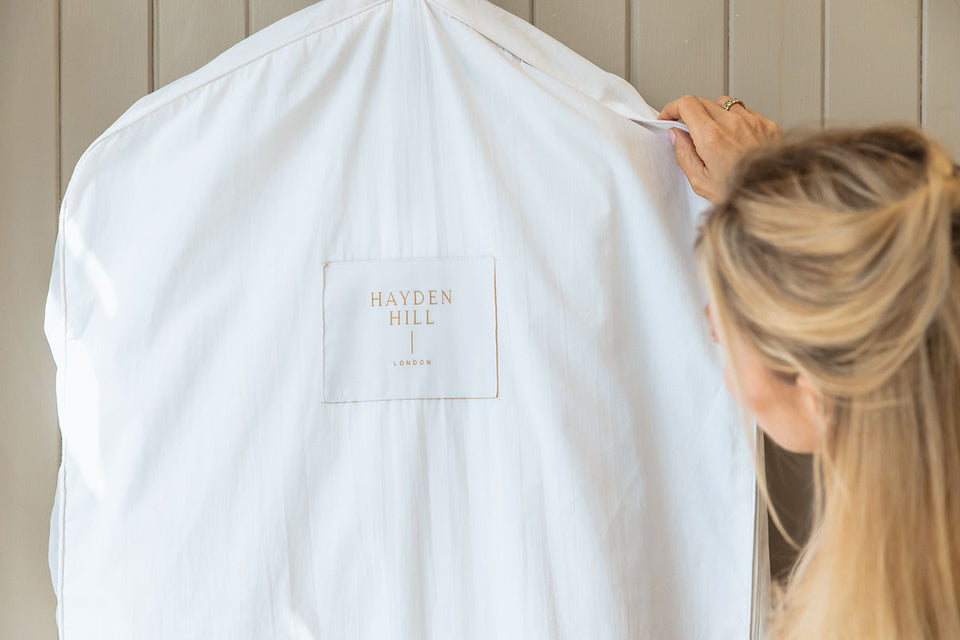
It is best to store silk clothing in cool, dry, and dark conditions.
As a natural fibre, it needs to breathe, so storing silk in tightly sealed plastic can often be harmful. It’s better to store silk between layers of cotton fabric, folded in breathable cotton bags or hung in zippered garment bags. These storage solutions will help your silk clothing retain its shape and keep it wrinkle-free for when you’re ready to wear it again.
However you plan to store your silk garments, always make sure they are fully clean and free of stains before you put them away. Any stains from a day’s wear or the natural oils of your body can degrade the fabric as it sits or hangs in storage, which may result in permanent staining or damage to the silk fibers.
It’s best to check stored garments periodically, in case dormant substances show up as stains or your storage area is compromised by moths.
Once infested, clothes moths can be incredibly tricky to exterminate. That’s why it’s important to be proactive and take the necessary precautions to prevent moths. Using zippered storage bags that are made of breathable cotton will protect your clothing from these creatures.
We recommend storing your silk garments in Hayden Hill garment bags to preserve the beauty of your clothing. Our bags are made of organic, soft cotton with a sheer, organza side panel so you can see your pieces while keeping them protected from light, dust, and moths. Hayden Hill delivers sustainable and beautiful garment care to protect what you love.
When properly maintained, silk clothing can last a lifetime and beyond, justifying its expense by becoming an heirloom piece that can be passed from one generation to the next. As fashion designer Oscar de la Renta said, “Silk does for the body what diamonds do for the hand.” So take care of your silk clothing and it will repay your efforts with timeless style throughout the years to come.

